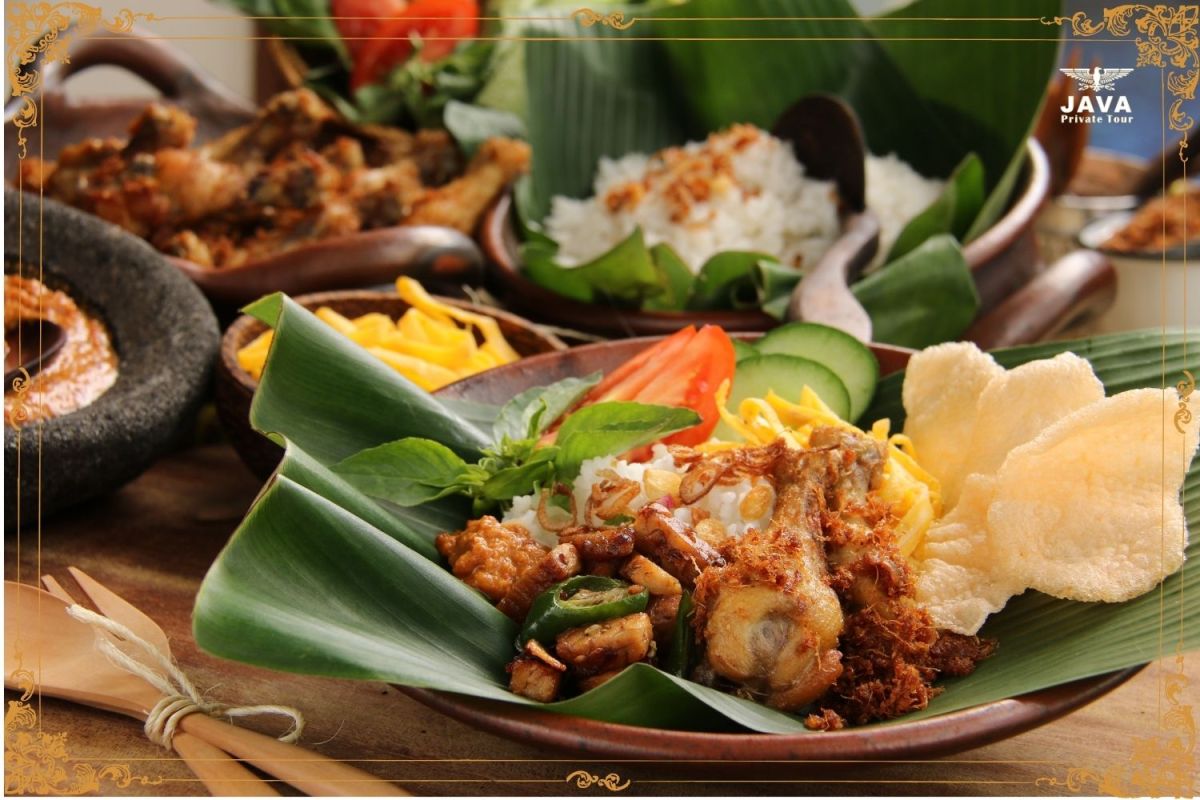javaprivatetour.com – Have you ever wondered about the origins of the beloved Indonesian dish, Nasi Uduk?
This fragrant rice dish, cooked in coconut milk and spices, is a staple in Jakarta and throughout Java. But where did it come from, and how did it become so popular?
In this article, we’ll take a journey through the history and flavors of Nasi Uduk.

The Origins of Nasi Uduk
There are several theories about the origins of Nasi Uduk. One theory suggests that it is a result of the acculturation of Malay and Javanese cultures.
In the 17th century, Batavia (now Jakarta) was a major trading port, attracting people from various ethnicities, including Malays and Javanese. The Malays brought with them their signature dish, Nasi Lemak, while the Javanese introduced Sego Gurih.
Over time, these two dishes merged to create Nasi Uduk, a unique blend of Malay and Javanese culinary traditions.
Another theory attributes the creation of Nasi Uduk to Sultan Agung of Mataram. The story goes that the Sultan, a fan of Middle Eastern and Indian rice dishes like Kebuli and Briyani, wanted to create a local version using readily available ingredients.
This led to the development of Nasi Uduk, which was then introduced to Batavia by Javanese migrants, where it became a favorite among the Betawi people.
The Distinctive Characteristics of Nasi Uduk
Nasi Uduk is characterized by its use of specific spices and condiments when cooking the rice in coconut milk. It is also traditionally served with a variety of side dishes, including semur jengkol (spicy jengkol stew), orek tempe (stir-fried tempeh), and sambal.
The name “Nasi Uduk” has several interpretations. One theory suggests that it comes from the word “uduk,” which means “difficult” in Betawi, as Nasi Uduk was once considered a food for the poor.
Another theory links the name to the Javanese word “tawadhu’,” meaning “humility,” reflecting the humble origins of the dish. Yet another interpretation simply states that “nasi uduk” means “stirred rice.”

Nasi Uduk Today
Today, Nasi Uduk is enjoyed by people from all walks of life in Indonesia and beyond. It is a popular breakfast, lunch, or dinner option, and can be found in restaurants, cafes, and even street stalls.
Nasi Uduk is also a popular dish for special occasions, such as weddings and festivals. Its versatility and delicious flavor make it a beloved culinary icon of Indonesia.
Planning a Trip to Java?
If you’re planning a trip to Java, be sure to add Nasi Uduk to your culinary bucket list.
Java Private Tour can help you experience the best of Javanese cuisine, including Nasi Uduk. Our experienced guides will take you to the best local eateries and ensure you have an unforgettable culinary experience.
Why Choose Java Private Tour?
- Our guides are fluent in English and knowledgeable about Javanese culture and cuisine.
- We offer flexible tour packages that can be customized to your interests and budget.
- We have a wide range of vehicles to choose from, including sedans, vans, and buses.
- Our drivers and guides are professional and licensed.
- We are recommended by embassies from various countries.
Contact Java Private Tour today to start planning your dream trip to Java! You can simply BOOK HERE
You May Also Like
 Shake Noodles (mie kocok) legendary dish from Bandung
Shake Noodles (mie kocok) legendary dish from Bandung
 Serabi Notosuman, A Traditional Javanese Snack with a Rich History
Serabi Notosuman, A Traditional Javanese Snack with a Rich History
 A Symphony of Flavors: Gudeg Manggar, Yogyakarta’s Culinary Delight
A Symphony of Flavors: Gudeg Manggar, Yogyakarta’s Culinary Delight
 Lontong Balap, A Simple Yet Delicious Dish That Represents Surabaya’s Culture
Lontong Balap, A Simple Yet Delicious Dish That Represents Surabaya’s Culture
 Warm and Delicious Mi Ongklok, a Must-Try Dish in Dieng, Java
Warm and Delicious Mi Ongklok, a Must-Try Dish in Dieng, Java












